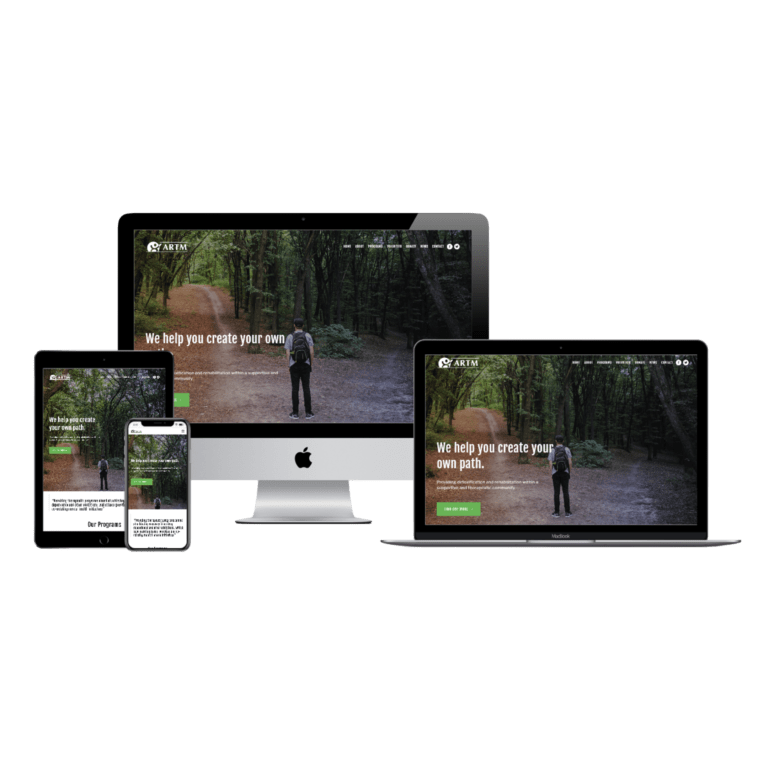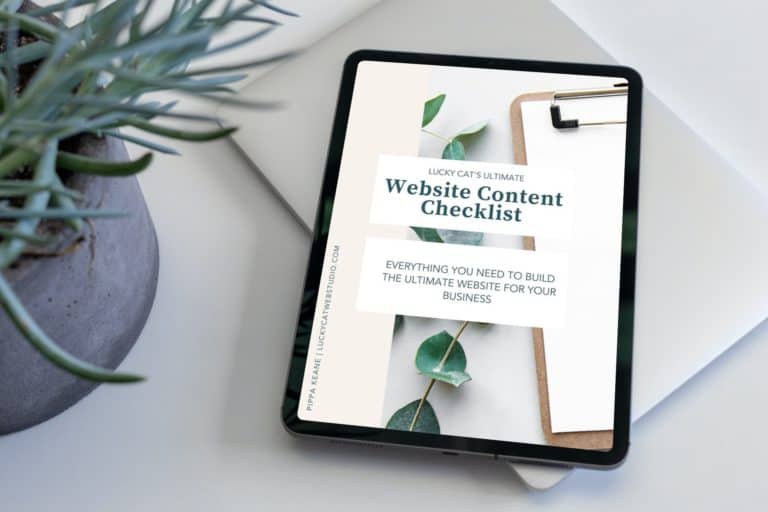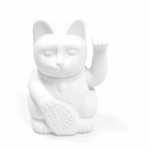The main objective of any e-commerce website is for it to convert i.e you want visitors to purchase something. There are a number of tricks and secrets website designers use in order to increase conversion and make sales. Today I will be sharing my recommendations to make your e-commerce store a thriving destination for your business. Follow these tips and secrets to ensure you nurture a successful e-commerce website and give your store the best chance of standing out online!
1) Don’t complicate your homepage
This is one of the main mistakes I see with e-commerce stores. The home page doesn’t need to show every little piece of information about your business. The home page of an e-commerce store is used as a teaser and first stop to the rest of your website.
Firstly, you need a clear hero section above the fold (the section before you start scrolling), which conveys to your visitors exactly what it is that you sell. This section needs a bold CTA (call to action) usually in the form of a button that prompts the visitor to “discover more”, “buy now”, or “shop dresses” etc. This CTA needs to be punchy.
Your homepage needs to show and link to your best sellers, and main product categories. Also, show how your products solve a problem for your customers.
2) Easy-to-follow navigation
The navigation menu is one of the most critical parts of an e-commerce website. If a customer cannot quickly find what they are looking for, they will click off your site QUICK SMART. We have all been that customer.
Navigation menus need to be logical, clear and show all your main categories. Mega menus are fab for e-commerce websites with a lot of products and can feature subcategories under main categories. In the example of a fashion store, under the main category of ‘dresses’, you could have sub-categories of ‘formal dresses’, ‘casual dresses’, ‘maxi dresses’ etc. This makes it super simple for your customers to find what they are looking for.
Your navigation menu should also have links to the about and contact pages, clear cart access, and a search tool on bigger websites.
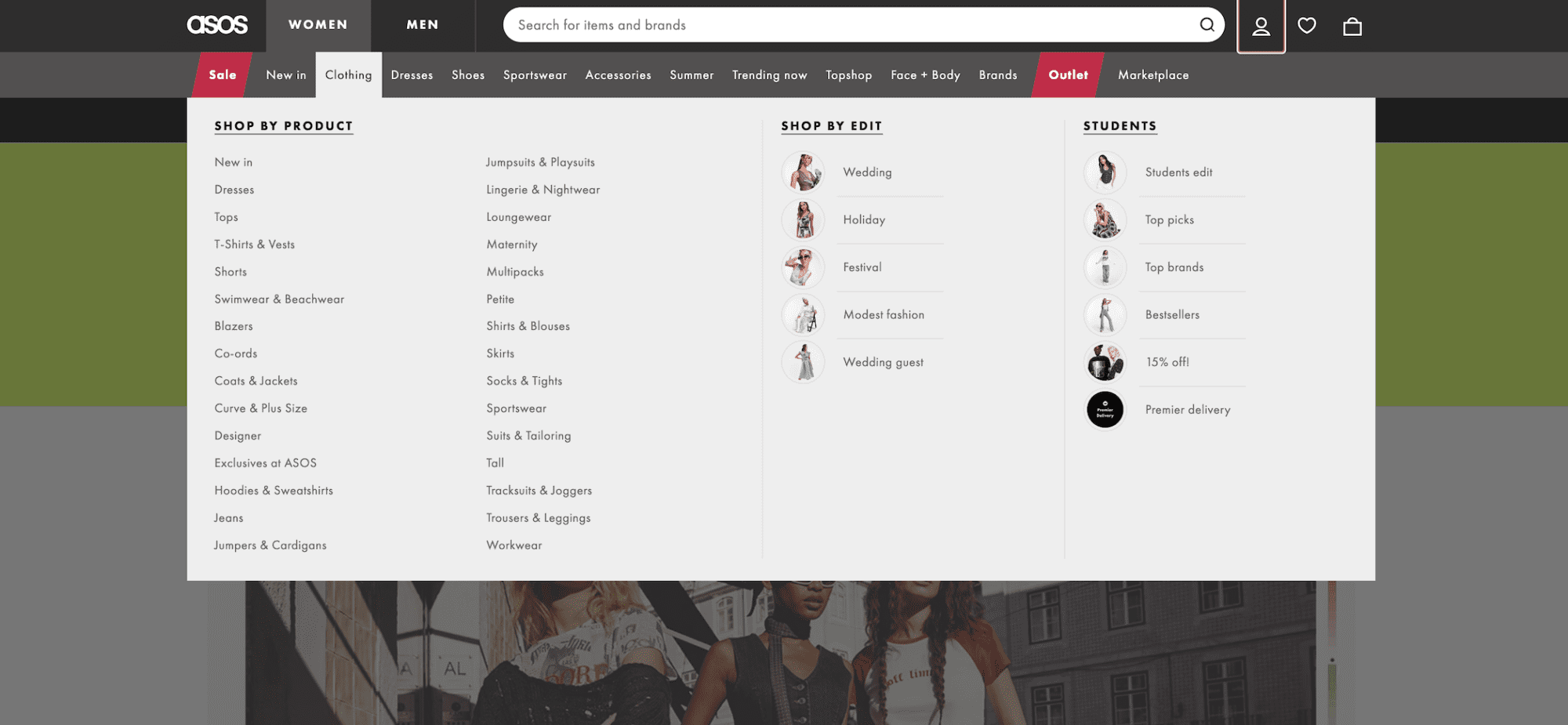
3) Have professional photography and video
This is a non-negotiable! Iphone images DO NOT CUT IT. High-resolution professional imagery will take your products to the next level and showcase your brand. This is one of the single best investments you will make for your business.
When having your product and brand images taken, it is important to ensure that there is a good variety of different orientations for all of your products. Landscape images are best for hero sections on homepages and category pages, and portrait images are great in gallery images on product pages. Ensure your landscape images include space where text can be overlayed without being too busy.
A good product photographer will ensure your product is showcased in a variety of settings eg. in a still setting, a modern mockup, and showing the product in use.
Video is obviously very important in these instances and can really convert sales when a customer can see exactly how the product performs in real life.
4) Product pages that convert
It’s so important for product pages to be clear and uncomplicated! The design should be simple and uncluttered for the best conversion.
They should include:
- A clickable product gallery with 3-10 photos and video
- Product title and description
- Price
- Add to cart button
- Dimensions/colours/sizes
- Materials
- How to’s
- Reviews
- Links to upsell other products
Product tabs and tables can also be useful to collate information in a concise way.
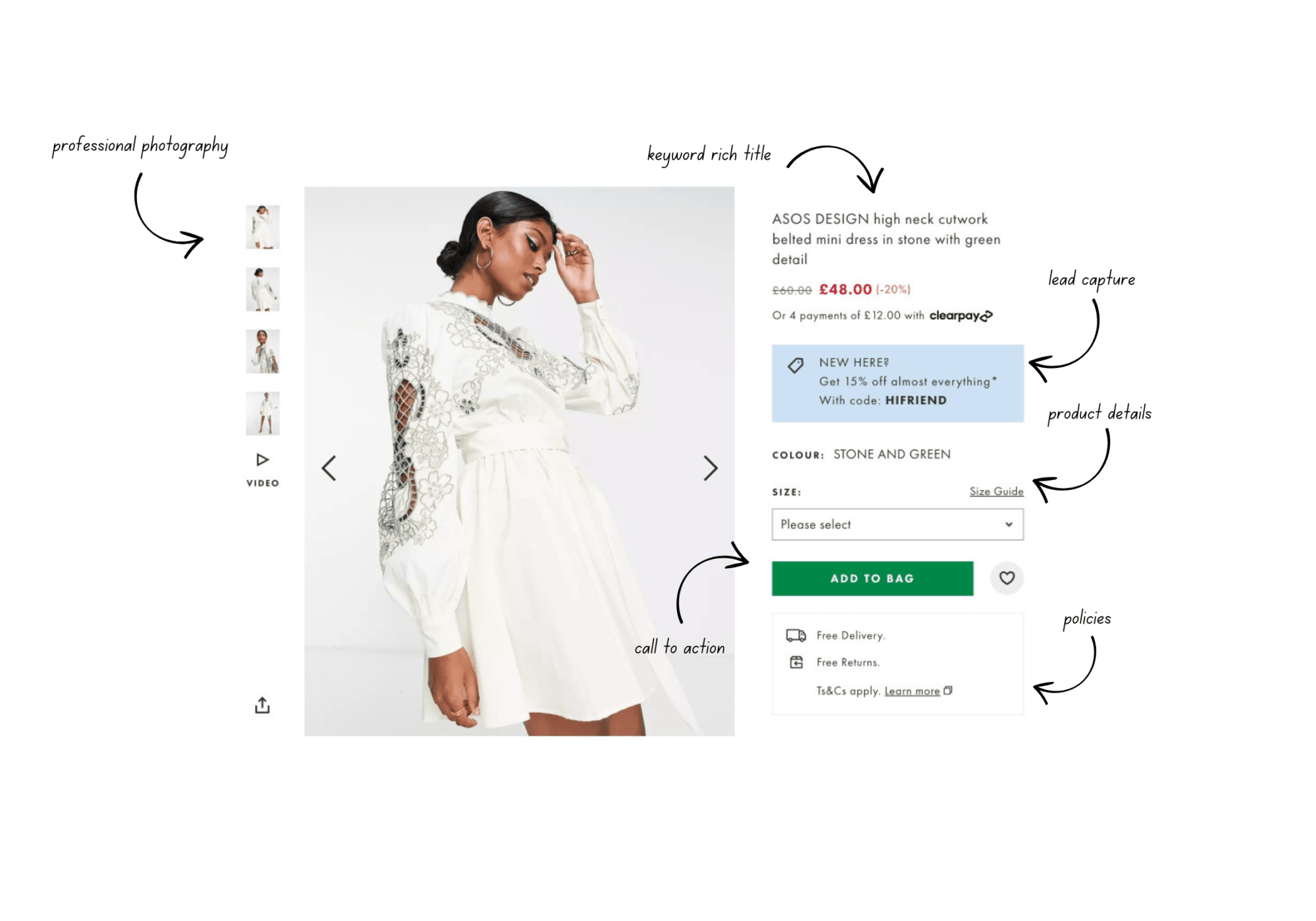
5) Expert product titles and descriptions
This is so important that it needs its own section in this article! This is where SEO (search engine optimisation) comes into play to get your product found on Google. Your product title should include the product name, and a short keyword description eg. Sofia (product name) Maxi Dress (keyword description).
The full product description should include as much useful information about the product as possible. It should be rich in SEO keywords that describe what your product is, how it can be used/worn, what it is made from, and how it can benefit the customer. It is important to note that Google will prioritise content that is written by humans for humans, so don’t stuff all your keywords into your descriptions and have it sound like a robot!
For more information regarding SEO, feel free to download my free pdf here.
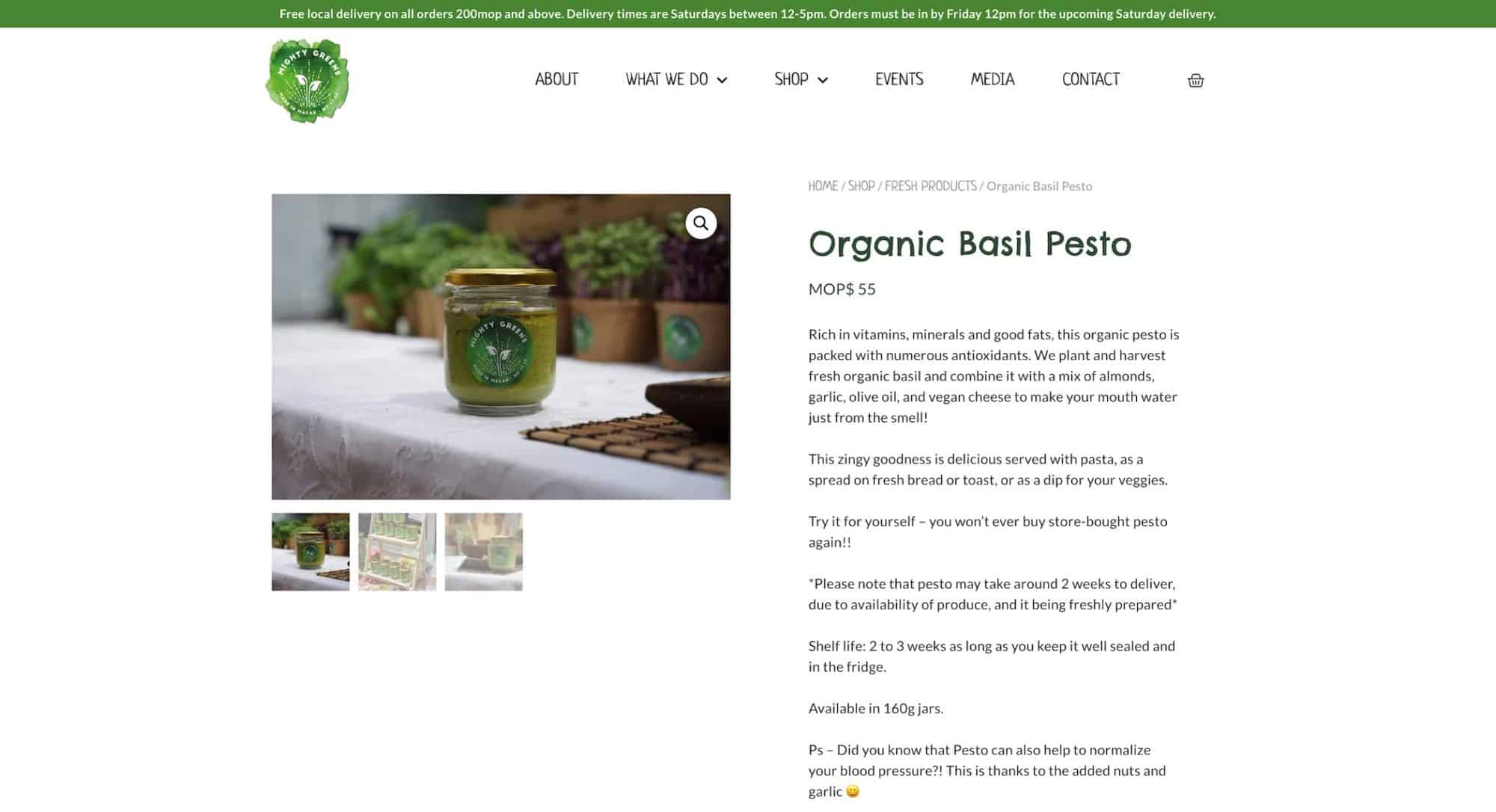
6) Cart and Checkout process that flows
On my e-commerce sites, I like to display a side popup cart that the user can check on whilst they are still browsing your store. This gives the user the ability to easily remove or add products from their cart and not have to waste time clicking to a whole new cart page.
The checkout flow should be fuss-free with no distractions. Headers, footers, extra links, and shiny designs can sidetrack users so they don’t complete their purchase. If possible, the entire checkout process should be on one page to really convert those sales.
A good range of payment options is important in order to cater for all types of purchasers. Paypal, Stripe, Square, and AfterPay are the main players offering credit, debit, and payment plans.
7) Make your shipping free or low cost
How often have you abandoned a purchase because you get ‘shipping shock’ when you land in the cart? Don’t let this happen to your e-commerce store!
Where possible, low flat-rate shipping should be advertised throughout the site (small alert banners at the top of the shop and home pages are great for this), but the best option to rack up those sales is to offer free shipping. To help cover your shipping fees, you may wish to look at building this cost into your product pricing.
8) Marketing that builds loyalty
**Newsflash** Your e-commerce store will not be a success without consistent marketing! The old adage of “build it and they will come” does not apply to e-commerce stores.
Shout about your business from the rooftops and use a mixture of social media, email funnels, and offers to help grow your customer base. It may take a little while to ‘warm up’ visitors before they make a purchase. This is where your email marketing will gently guide customers back to your website and remind them how awesome your products are!
Capture those all-important email addresses on your website by offering a “lead capture”. This could come in the form of a discount code, a downloadable pdf, or some other offer.
Set up automated email flows such as abandoned cart emails, birthday discounts, sales offers, product review requests, and new product launches to send more traffic to your website.
9) Make customer contact easy
The contact page link should be displayed clearly in either your main navigation menu or your footer (or both).
Many e-commerce websites are converting more sales with the use of instant messaging or chat widgets. These allow the customer to ask questions about your products and receive an instant response to their query, which could be just what they need to make a purchase then and there.
Also, ensure your contact email addresses and forms are displayed clearly and simple to action.
10) Don’t forget your policies
Store policies add legitimacy to your e-commerce store and are a legal requirement when gathering data. This is important information for your customers and links should be located in your website footer.
Policies that may be included (but are not limited to) are a privacy policy, terms and conditions, shipping policy, refund and returns policy.
These are just some of the main e-commerce website tips and tricks I use when building online stores. If you follow these basic principles and set up your e-commerce store correctly from the beginning, you will be well on the way to achieving great success by getting consistent traffic, a loyal customer base, and a website that converts sales.
Thanks for visiting! Feel free to follow me on Instagram for more tips and tricks, or DM me with your e-commerce questions and I’ll do my best to help.








